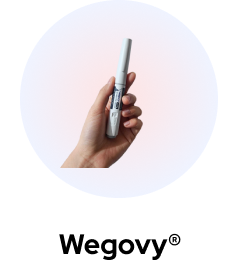Written by: Jill Health Team
Reviewed by: Sarah Bento De Sousa, PharmD RpH
Latisse, a prescription medication, is your go-to solution for fuller and prettier lashes. It enhances your lashes using its main ingredient, bimatoprost. – The application process is a breeze, just like putting on eyeliner.
What’s in it for you? Well, Latisse not only boosts your lashes but also your confidence. Whether it’s age-related lash loss or other treatments, Latisse has your back.
In this article, we’ll cover how Latisse works and what to pay attention to in order to use this safely.
How Does Latisse Work on Lashes?
Latisse’s active ingredient, bimatoprost, is a prostaglandin analog. Its mechanism of action involves the stimulation and prolongation of the eyelash growth phase, known as the anagen phase.
By doing this, Latisse not only increases the length of the lashes but also contributes to more eyelash follicles entering the growth phase, thus enhancing overall eyelash density.
The exact biological process is complex, but it fundamentally alters the hair growth cycle in favor of longer, thicker, and darker lashes.
For insights on how to maximize the effectiveness of Latisse, you might find this article on making Latisse work faster quite useful.
Encourages Eyelash Growth
The way Latisse encourages eyelash growth is by directly affecting the eyelash follicles. It activates certain receptors in the follicles, leading to improved growth.
Regular application of Latisse at the base of the eyelashes results in noticeable improvements in the eyelash length, thickness, and darkness.
This process is gradual and requires consistent use as directed by a healthcare provider.
How Long Does Latisse Take to Work?
Typically, users start to see changes in eyelash length and fullness within 4 weeks, with significant results by the 16th week. It’s important to understand that the results are progressive and depend on consistent nightly application.
Patience and adherence to the prescribed routine are key to achieving the best outcomes. The journey of eyelash transformation with Latisse is gradual, and the results are often worth the wait.
How Long Do Latisse Results Last?
The results of Latisse are dependent on continuous use. Once the application of the product is stopped, eyelashes will gradually return to their original state over a period of weeks to months.
This return to the baseline is due to the natural eyelash growth cycle resuming its typical pattern without the stimulation from Latisse.
Therefore, maintaining the regimen is crucial for sustained results.
What is Latisse?
Latisse is a prescription medication, known scientifically as bimatoprost ophthalmic solution. Originally developed for glaucoma treatment, it was found to stimulate eyelash growth.
This discovery led to its FDA approval for treating hypotrichosis of the eyelashes. Hypotrichosis is a condition characterized by inadequate or not enough eyelashes. Latisse works by enhancing the growth of eyelashes, making them longer, fuller, thicker, and darker.
The product comes in a bottle with applicators, and it is applied along the base of the upper eyelid, much like how one would use eyeliner. For detailed guidance on applying Latisse, you can refer to this comprehensive guide.
Benefits of Latisse
The benefits of Latisse are primarily aesthetic, offering an increase in the length, thickness, and darkness of the eyelashes. This can significantly enhance facial appearance, providing a more youthful and vibrant look.
For people, especially women, who experience eyelash loss due to aging, medical conditions like chemotherapy, or other treatments like botox, Latisse offers a way to regain fuller lashes.
The psychological benefits of this improvement in appearance should not be underestimated, as it can boost confidence and self-esteem.
In the context of hair growth treatments, Latisse stands out as a highly effective option, as discussed in this article comparing various hair growth products.
Is Latisse Safe to Use?
Latisse is generally safe for most users, but it is a prescription medication and requires a doctor’s approval. The FDA approval of Latisse assures its efficacy and safety when used as directed. Individuals who wear contact lenses or glasses, or have a history of eye conditions like uveitis or increased intraocular pressure, should consult an ophthalmologist before using it. It’s vital to follow the recommended application process and to be aware of any changes in your vision or eye condition while using Latisse.
Potential Side Effects of Latisse
While effective, Latisse can have side effects. These include eye irritation, dryness, redness, darkening of the eyelid skin, and potential changes in iris pigmentation.
Some users may experience allergic reactions, hence it’s important to monitor for any adverse effects and consult a doctor if they occur. Side effects are typically mild and often resolve with time or discontinuation of the product.
Who Shouldn't Use Latisse?
Latisse may not be suitable for everyone. Those with certain eye conditions or sensitivities, particularly those related to intraocular pressure or chronic eye infections, should avoid it.
Pregnant or nursing women, and individuals undergoing certain eye treatments, should consult their doctor to evaluate if Latisse is a safe option. The decision to use Latisse should always be made in consultation with a healthcare professional who can assess individual risks and benefits.
Key Takeaways
Latisse, as a specialized prescription treatment, has proven to be a highly effective solution for enhancing eyelash growth. It works by prolonging the growth phase of the lashes, leading to noticeable improvements in length, thickness, and darkness.
The commitment to regular application is crucial for achieving and maintaining these results. While generally safe, it’s important for users to be mindful of potential side effects and consult with a healthcare provider, especially in cases of pre-existing eye conditions or sensitivities.
Latisse not only offers cosmetic benefits but also boosts self-confidence and satisfaction with one’s appearance.
Frequently Asked Questions (FAQs)
Can Latisse Treat Eyebrows Too?
Although Latisse is primarily designed for eyelash growth, some users have experimented with its application on eyebrows.
This off-label use has shown promising results for some in enhancing eyebrow fullness.
However, it’s important to approach this with caution and seek medical advice before using Latisse on eyebrows, as the safety and efficacy in this area are not as well established as for eyelashes.
Can Latisse Be Applied To The Lower Eyelids?
The use of Latisse on lower eyelids is generally not recommended. The product is specifically designed for application on the upper eyelid margin at the base of the eyelashes.
Applying Latisse to the lower eyelids can increase the risk of side effects, such as irritation or unwanted hair growth outside the targeted area.
It’s crucial to follow the application instructions and guidelines provided by healthcare professionals to ensure safe and effective use.
What Is The Active Ingredient In Latisse?
Bimatoprost is the active ingredient in Latisse. It belongs to a class of medications called prostaglandin analogs.
Bimatoprost works by affecting the hair growth cycle, specifically by extending the growth phase of the eyelashes, resulting in longer, thicker, and darker lashes. Its effectiveness as an eyelash enhancer has been well-documented in various clinical studies and has garnered widespread acceptance in the field of cosmetic treatments for eyelash enhancement.











 (US)
(US)